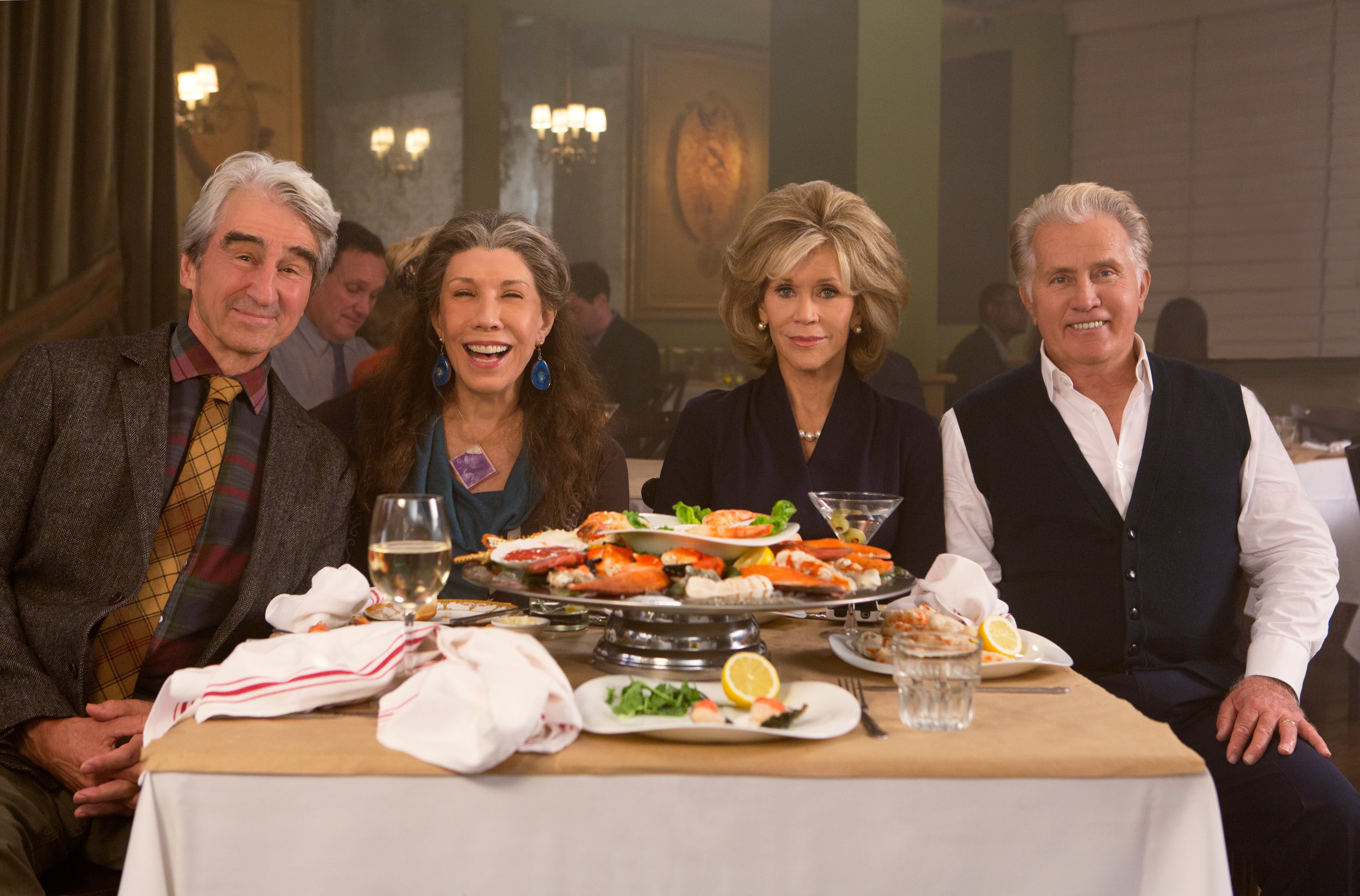“Grace and Frankie,” Netflix’s latest original program, tells the story of two frenemies — the eponymous Grace and Frankie, (Jane Fonda and Lily Tomlin, respectively) — who move in together after their husbands Robert and Sol (Martin Sheen and Sam Waterston, respectively) divorce them to get married to each other. And though Fonda and company are getting up there in years (quite gracefully, I might add), the show often feels quite new, offering a refreshing if somewhat muddled take on the divorce-centric sitcom.
Developed by Marta Kaufman (“Friends”) and Howard J. Morris (“Home Improvement”), “Grace and Frankie” takes one of the most iconic sitcom tropes — the odd couple — and doubles down. The show boasts not one odd couple but two — Grace and Frankie and Robert and Sol — and derives endless enjoyment from the humorous personality differences between them.
Despite the employment of such classical comedic cliches, however, “Grace and Frankie” is ultimately a single-camera program, a creative choice that transforms the show into a strange mix of old and new. With greater close-ups and polished sense of intimacy, the single-camera approach allows us to peer more closely at the lives of the characters, lending a sense of prestige and drama to “Grace and Frankie” as well as a new take on old tricks.
This hybridity, however, also works as a detriment to the show; “Grace and Frankie” is essentially a 22-episode sitcom stuffed into 13 episodes. Here, the writers are telling two different versions of the program: The first is a broad sitcom wherein each episode is a humorous reiteration of the fact that Grace and Robert are prudish sophisticates while Frankie and Sol are freewheeling hippies, while the second is a longer narrative about two women dealing with divorce and the prospect of being single in their 70s.
For this reason, for “Grace and Frankie,” 13 episodes is simply not enough. In trying to blend these two programs, the series often spends too much time exploring the opportunities of one while, quite frankly, ignoring the other.
Plotting is a major issue; most of the season consists of entire episodes devoted to the show’s central conceit while the last few episodes actually begin to emphasize genuine character growth. Kaufman and Morris want Grace and Frankie to be both straightforward comedic caricatures and fully realized characters, but the constant flip flopping doesn’t really work. As a result, “Grace and Frankie” feels inconsistent; some of the episodes are non-specific side-splitters while others are more dramatic and not particularly funny.
Nevertheless, despite these concerns with “Grace and Frankie” as a whole, the individual episodes can be quite fantastic. The show has some hackneyed jokes (a recurring joke about Frankie’s need for a hearing aid is particularly grating), but “Grace and Frankie” can be hilarious, especially when it gathers its strong ensemble cast together. Sitcoms only work when the cast has chemistry, and this cast possesses chemistry in spades. As the central divorcees, Jane Fonda and Lily Tomlin have a natural onscreen dynamism that feeds off their off-screen friendship. Despite the passive-aggressive relationship between Grace and Frankie, Fonda and Tomlin make these two characters likable and the banter between them thrives. Moreover, Sheen and Waterston are equally wonderful; Waterston in particular exudes a certain puppyish charm, so unlike the characters he has played in the past on shows like Law & Order and The Newsroom. This chemistry becomes vital in the later episodes, when the series veers into drama. The likability of these characters allows us to become more invested in their common struggle with divorce, loneliness, and acceptance.
In sum, despite their rich sitcom pedigrees, Kaufman and Morris don’t know how to reconcile the old modes of television with the new. Perhaps then, “Grace and Frankie” is best viewed as an ambitious though altogether flawed reflection of the lives of the show’s engaging women — of learning how to leave the past behind and accept what comes next.
Contact Marty Semilla at msemilla ‘at’ stanford.edu
